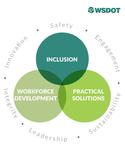In Los Angeles County, the nation’s most populous and core of the nation’s most densely populated urban area, transit commuting is dropping fastest in areas with the most comprehensive transit service. This is illustrated by an examination of the 5-year trend from 2008-2012 (middle year 2010) to 2013-2017 (middle year 2015) for Public Use Microdata Areas (PUMAs). read more »
Transportation
Transit Conundrum: Losses Greatest in Areas with Best Service in Los Angeles
- Login to post comments
Americans Reluctant to Join the EV Train
We’re constantly being bombarded with the EV movement, but Americans must have a multitude of subconscious reasons for not buying into one of the major movements to save the world from itself as they are showing their lack of enthusiasm by avoiding the dealerships. read more »
- Login to post comments
WSDOT Wants Lawmakers to Remove Congestion Relief as a Transportation Policy Goal
This week, WSDOT leadership testified before the House Committee on Transportation in support of House Bill 2688, which removes the goal of congestion relief from the state’s transportation policy goals and replaces the rest. The agency said the bill supports its strategic plan, pictured in the diagram. read more »
- Login to post comments
The Limits of Being “Near Transit”
In a recent paper, David King of Arizona State University, Michael Smart of Rutgers University and Michael Manville of UCLA cited the legendary urbanist Mel Weber on the importance of facilitating sufficient mobility for low-income citizens: “Our central mission is to redress the social inequities thrown up by widespread auto use, and our central task is to invent ways of extending the benefits of auto-like transportation to those who are presently carless.” read more »
- Login to post comments
The City as a Self-Organizing, Adaptive System - Part 2
In a preceding article, I argued that a "city-as-an-artifact" approach to planning misses the organic nature of cities, and, when used in action, this approach could result in disappointing, if well-intended, outcomes. Similarly, biomorphic models for cities fail to construct a unified, actionable theory of planning. read more »
- Login to post comments
2019 Ridership Numbers Reveal Transit's Dim Future
Thanks to a late-year surge in New York subway ridership, nationwide transit ridership in December 2019 was 3.0 percent greater than December 2018, and ridership for 2019 as a whole was 0.1 percent greater than in 2018, according to data released last week by the Federal Transit Administration. Take away the New York City subways and nationwide ridership fell by 1.5 percent in December and 1.2 percent for the 2019 as a whole. read more »
- Login to post comments
Sydney High-Density Planning
High-density planning policies have become fashionable and Sydney planners are among the most enthusiastic adopters. New South Wales Government authorities claim that high density policies result in a reduction of greenhouse gas emissions (gge), provide improved housing affordability and result in reduced traffic congestion. No evidence has been provided to justify these assertions. Such claims need to be investigated as well as density’s detrimental effect on amenity and quality of life should also be investigated. read more »
- Login to post comments
Population Growth Concentrated in Auto Oriented Suburbs and Metropolitan Areas
The suburbs and exurbs continue to dominate population growth in the nation’s 53 major metropolitan areas, according to a City Sector Model (Note 1 and Figure 9) analysis. We traced growth between the 2010 Census and the American Community Survey 5-year data, from samples taken over the period of 2014 to 2018. The middle-year was 2016 (Note 2).
Population Growth by City Sector read more »
- Login to post comments
Urban Transit Is an Energy Hog
Transit is often touted as a way to save energy. But since 2009 transit has used more energy, per passenger mile, than the average car. Since 2016, transit has used more than the average of cars and light trucks together. read more »
- Login to post comments
A Walk Around Jersey City’s Exchange Place
More than a quarter century ago, Joel Garreau’s classic Edge City; Life on the New Frontier described the rise of commercial centers outside the historic downtowns (central business districts or CBDs). read more »
- Login to post comments






















